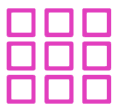A
Reply to the question below.
2) What you think about this submission:
Add New Comment
Q
Q: How do I practice so many aspects of drawing (anatomy, facial expressions, hair) to get better overall?
A: First of all, make a list of the things that you want to learn. Common subjects are gesture drawing and perspective. Also, it’s very important to learn one thing at a time. I made this mistake myself, where I wanted to learn too many things at the same time.
The most important thing of practice is consistency and evaluation. In terms of consistency, make sure you give yourself a fixed time slot every day to practice for at least 30 minutes, in order to master a new skill. Besides that, it’s useful to set learning goals for yourself, ‘in what amount of time do I want to learn a certain thing?’. For example, ‘in three months, I want to be able to draw gesture poses in one minute’.
Courses and books are a great tool for you to progress within the skill that you want to learn. But keep in mind quality over quantity; it’s better to have one or two very good books / courses about the subject, than having 10 of them and causing you to lose control over all the subject matter. A popular method is the 20/80 rule; with 20% of the time having learned theory, you should apply 80% of the time on practicing.
With evaluating I mean to try and take a look at your drawings with a fresh set of eyes. Since that can be quite difficult, communities can help. See if there’s any Discord groups / Facebook groups where more people are practicing the thing that you’re doing. Improving works best and fastest when giving feedback to each other.
Here’s some advice for gesture drawing. Start out first by drawing from reference. What I mean with that is to go to a website (see a list below) where you can draw from pictures with models posing. Usually, you can set a timer in which the images appear and disappear. When you get the gist of that, you can also start experimenting with drawing gesture from memory. Also, see if there are any live life drawing sessions in a place near you. Seeing a real model pose can help you to see depth and lighting better, to name a few.
One other important thing that I would like to share with you is the way that you hold your pencil when drawing. We’re very much used to hold our pencil the same way we write. Here’s an in-depth example of why this might not be the best way to hold your pencil:
https://www.youtube.com/watch?v=pMC0Cx3Uk84
As for perspective, yes, this is also quite a difficult skill to master. My recommendations would be to go out in the world and draw your surroundings. Discover where a vanishing point could be, or if you’re seeing 1- or 2-point (or even a 3-point!) perspective. Aiming to a more fundamental level, you could watch YouTube videos about perspective or take some photos that you’ve made in the past, and trace the perspective lines.
Finally; don’t be too hard on yourself when things don't go the way you want them to go. We’re human after all, and we need time to learn new things.
Resources, (gesture) drawing:
Love Life Drawing - https://www.youtube.com/c/lovelifedrawing
Proko - https://www.youtube.com/c/ProkoTV
Schoolism - https://schoolism.com/courses/drawing/gesture-drawing-alex-woo
Figure drawing poses – sources:
http://reference.sketchdaily.net/en
https://quickposes.com/en
https://line-of-action.com/practice-tools/figure-drawing/
(paid) https://www.bodiesinmotion.photo/
Resources, perspective:
Drawabox - https://drawabox.com/
BaM Animation - https://www.youtube.com/watch?v=upxBGNcryRs
Nicholas Kennedy (paid) - https://paintwithnick.artstation.com/store/AlDl/practical-perspective
SUPPORT SESSION (26 Oct): How to practice the many aspects of drawing?

This is where the description will go. It adapts to the size of the description and title, maintaining a minimum of 64px margin above and below while also maintaining a width of 80 perfect of the grid section.
Team:
Team
Team:
Team
An error occurred. Try again later
Edit Question
Your question has been uploaded.










